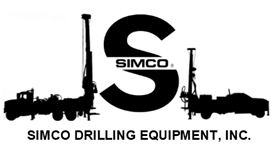Well drilling causes a disturbance to the natural layers of sand, silt and clay found in sediment. It can be difficult to obtain a representative water sample from the screened zone for water quality analysis when drilling fluids are forced into the well. But there are some drilling techniques that can minimize this difficulty and make environmental monitoring more reliable.

If a well can be driven to the correct depth without drilling fluids, there is a lesser degree of “induced” water. But this technique makes sediment samples unavailable for the driven well and delays locating the sampling zone. A good method for obtaining soil and vapor samples is through the use of a split spoon sampler, with the example remaining relatively undisturbed. Once the samples are obtained, a two-inch well screen can be set in place for future water sampling.
However, the smearing of the borehole when taking a split spoon sample can cause the specimen to be an unreliable sample. One way to avoid this issue is through bailing or surging the screened area with a surge block. This will remove the fine sediments smeared along the borehole wall so a nonturbid, clear water sample can be collected. By only removing the water from the well, much of the sediment will get trapped against the outside of the screen and will continue to cloud the water. Using a surge and pump out method until the water is clear is the most effective way to produce the most representative water sample for monitoring.



